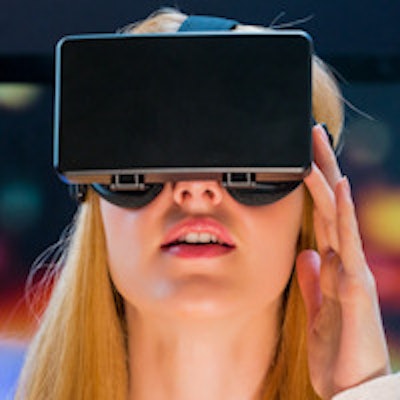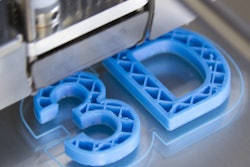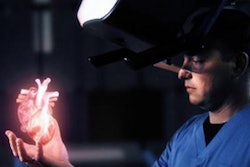
Virtual reality is by no means a new technology, but recent technological developments have given it new life, enabling it to spread from gaming and consumer markets into industries such as manufacturing, construction, and healthcare. However, how hard will the move into healthcare be? How can we use virtual reality in healthcare, and what are the challenges for adoption?
The current state
 Ulrik Kristensen is a senior market analyst at Signify Research.
Ulrik Kristensen is a senior market analyst at Signify Research.Virtual reality (VR) and augmented reality (AR) are still far from mainstream market adoption. The concept of performing advanced visualization and complex image analysis for diagnosis in an open 3D space, with all the tools and functionalities available at the touch of a virtual button or voice commands, might seem incredibly attractive to physicians today, compared with staring at an old-fashioned, flat, 2D computer screen and trying to imagine a 3D structure.
With basic technology requirements such as processing power, VR and AR goggles, computer vision, and analytics far more accessible today (due to costs being driven down by high competition in the gaming industry), use in healthcare and clinical settings is starting to gain traction.
However, for VR to achieve more widespread adoption, other barriers must be overcome: The real benefits of the technology need to be established; policymakers and government agencies need to define the ground rules for clinical use and reimbursement; and end-users of the technology need to be on board and working closely with the industry to help develop it to fit the needs and customs of real-world clinics, instead of a technology center or innovation lab.
Pikachu shows the way
The midterm way to adoption of virtual reality may be through AR, where the virtual world is overlaid on top of the real world. AR for surgical applications and image-guided therapy, which layers 3D images from scanners, segmentations, and measurements on top of the patient directly in the interventional suite, are likely candidates for the first products to be adopted in the mainstream.
Initial products using a tablet or computer screen and camera held in front of the patient have been tested for surgical navigation and have demonstrated higher accuracy in spine surgery in recent studies, something showcased last year with the launch of the Azurion hybrid interventional product from Philips Healthcare. However, with Microsoft HoloLens and other companies in consumer, gaming, and manufacturing industries developing more lightweight glasses that can be worn to support AR, in a short time, AR glasses will be more widely available for trials in new clinical use cases.
For example, OpenSight from Novarad uses HoloLens goggles for adding MR and CT imaging over the patient in real-time for surgical applications and preoperative planning. A notable AR start-up is ApoQlar based in Hamburg at Philips Health Innovation Port; the firm is developing and testing its Virtual Surgery Instructor (VSI) for AR in the operating room for neurosurgery, a project that also uses HoloLens goggles.
That is not to say all products will follow the same AR pathway. EchoPixel and RealView Imaging are using holographic imaging, either using EchoPixel's True 3D Viewer workstation and glasses for visualization of anatomical structures or RealView's Medical Holography technology for inspecting holographic images for surgical planning or diagnosis without glasses at all.
However, at the moment these technologies don't offer the merged virtual patient view with measurements and segmentations directly on the patient, most useful for interventional radiology and surgery. Instead, holographic applications may be more useful for nonprocedural use cases, such as diagnosis and surgical planning.
Other VR uses in healthcare
We are also seeing significant development outside of the radiology lab and surgical suite, particularly with VR being used in training, rehearsal, and simulation for the education of healthcare professionals. Companies such as ImmersiveTouch with its MissionRehearsal VR training platform, and U.K.-based Touch Surgery with a surgical simulation platform and applications for multiple operations from hip surgery to dentistry, have been making significant progress. The latter also recently landed $20 million (16.3 million euros) in additional venture capital funding for its new tool Go Surgery, backed by London-based Balderton Capital and San Francisco-based VR specialist venture capital firm 8VC.
The use of VR for patients is also under development. Companies such as Firsthand Technology for VR pain and stress relief use VR imagery and sounds to relieve chronic pain, and Tel Aviv-based VRPhysio have created a clinical VR solution to help with physical therapy for whiplash and other conditions. VRPhysio uses a VR headset to engage patients in physical therapy in a fun way without the need for a human physical therapist to perform the exercises, while at the same time collecting data from an internal device for tracking improvements to be reviewed by the physician.
Also, at the interface between patient and provider, HoloPack Portal from TeraRecon provides 3D image viewing using Microsoft HoloLens to be used for educational or patient communication purposes, as an alternative to 3D printing solutions.
Building the foundation
And why are the other uses in healthcare relevant when discussing VR in advanced visualization and diagnostics? Because all these applications will help physicians, radiologists, and healthcare providers become used to VR and communicating with computers using hand gestures and voice control, a massive change from today. Therefore, broader adoption in healthcare, from surgeons using AR in surgical planning and interventional radiology, medical students using VR as part of their education, and patients using VR and AR for physical therapy and viewing their disorders before an operation, will help to build interest and comfort with the technology.
While this should help widen the availability, reduce cost, and increase user comfort with VR, the role of the radiologist in the adoption of VR still remains unclear at this stage, as there is little to support how it improves efficiency and accuracy of diagnosis. However, early buy-in from diagnosing physicians can help in developing applications according to their needs, while also increasing the confidence and comfort-level with a more immersive experience. This will be of particular use in diagnostic applications that require a high degree of spatial visualization, such as in cardiology, colonoscopy, and oncology, where a more intuitive visual inspection could be beneficial in terms of efficiency and diagnostic accuracy.
So, will virtual reality ever become reality?
Despite VR being very interesting for healthcare applications and a high level of specialist venture capital and government funding backing development of the technology, quite a few hurdles need to be to overcome for vendors before adoption in radiology for advanced visualization and diagnostics. Proponents of VR must do the following:
- Show that it reduces the psychological barrier by increasing exposure in and around the healthcare segment.
- Improve the user-friendliness of VR and AR applications, and develop them in association with physicians and radiologist to directly target their needs and reduce the implementation burden.
- Work hard on the business case to prove why VR and AR can help save time and money and increase accuracy in diagnosis.
In a healthcare system increasingly focused on value-based healthcare, the last point will be especially important to win over healthcare IT decision-makers; their focus will be on tools and applications that make sense from a financial and clinical perspective. Given that artificial intelligence and business analytics are already ahead vying to be the next investment for healthcare providers, virtual reality may experience a rough start, unless technology vendors can add it to existing systems as a feature for applications in cardiology, colonoscopy, or oncology, where the spatial view benefits can be easily recognized and valued.
Related market report
"Advanced Visualisation and Viewing IT -- World -- 2017" provides a highly detailed, data-centric analysis of the world market for advanced visualization and viewing IT. Key features include market size estimates, annual growth rate forecasts for 2017 to 2021, and vendor market share analysis. Get more information by visiting the Signify Research website.
Ulrik Kristensen is a senior market analyst at Signify Research, an independent supplier of market intelligence and consultancy to the global healthcare technology industry. Our major coverage areas are healthcare IT, medical imaging, and digital health. Our clients include technology vendors, healthcare providers and payors, management consultants, and investors. Signify Research is headquartered in Cranfield, U.K.
The comments and observations expressed are those of the author and do not necessarily reflect the opinions of AuntMinnie.com or AuntMinnieEurope.com.



















